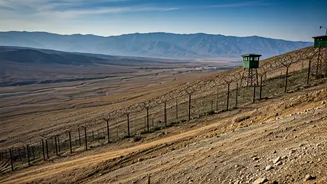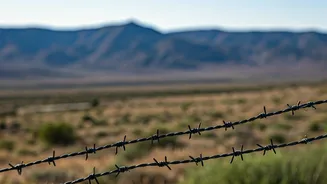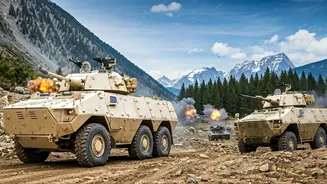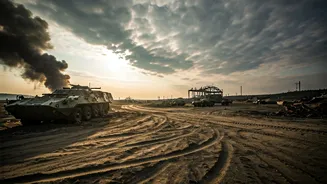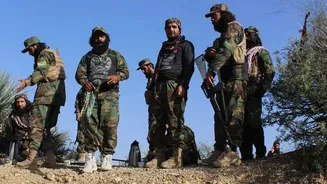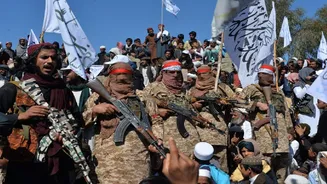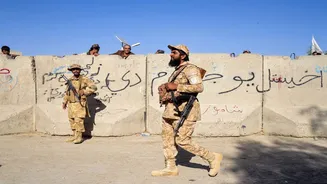Border Disputes Escalate
Tensions along the Khyber Pakhtunkhwa border have flared up recently, marked by renewed clashes between Pakistani forces and the Afghan Taliban. These
incidents reflect the ongoing disputes regarding the border demarcation, specifically the Durand Line. Pakistan has consistently stated its commitment to securing the border and preventing cross-border movement by militants. The Afghan Taliban, on the other hand, have historically contested the legitimacy of the Durand Line, which has led to sporadic conflicts and heightened security measures on both sides. The recent clashes signal a worsening of the already strained relationship, which could have serious implications for regional stability. The exact details of the recent clashes, including the number of casualties and the specific locations, are still being assessed by both sides, but it's clear that the situation is delicate and needs immediate de-escalation measures to prevent further loss of life and a broader escalation of conflict. The underlying issues remain complex, involving historical claims, security concerns, and political considerations.
Taliban's Stance Explored
The Afghan Taliban's perspective is critical to understanding the current situation. The Taliban's stance is rooted in its historical opposition to the Durand Line. They view the border as an artificial imposition by the British during colonial rule. This stance reflects a broader rejection of the international boundaries, which they consider a violation of Pashtun territories. This has caused a lot of friction over time. The Taliban's actions and statements often reflect this historical dispute, influencing their approach to border management and security. Any attempts to fortify the border are seen by them as encroachments, increasing the likelihood of conflict. Moreover, the Taliban's internal dynamics and various factions' influence over border policies are also worth examining. Understanding the Taliban's motives and objectives is vital for any diplomatic efforts to resolve the current crisis. Furthermore, the complexities of tribal affiliations and cross-border movements add another layer of challenges, and it is crucial to recognize these elements to devise effective strategies for peace and stability in the region.
Pakistan's Security Concerns
Pakistan’s concerns center around border security and the prevention of militant incursions. These concerns have led to the construction of fencing, which aims at controlling cross-border movements. Pakistan's military has increased patrols and deployed forces to secure the border areas. It has consistently emphasized its commitment to preventing any activities that could threaten its territorial integrity. The presence of militant groups along the border is a major threat to Pakistan, and it constantly aims to counter any threats. They believe these groups use Afghan territory to launch attacks, thus, making border control a primary security objective. Pakistan also worries about the flow of refugees and the potential for instability on its border. The measures are often met with resistance from the Afghan Taliban. Pakistan's strategies are designed to ensure border security while managing the humanitarian aspects, such as the safe return and movement of refugees.
Impact on Civilians
The ongoing clashes have significant consequences for the local civilian populations on both sides of the border. These communities often face displacement, economic hardship, and increased security risks. Any crossfire or military operations could lead to casualties, including innocent people. Displacement forces people to leave their homes, creating additional burdens on the communities. Furthermore, trade and cross-border movement often get disrupted, which impacts livelihoods and access to essential services. The limited access to healthcare and education makes the situation worse for people who are already struggling. Addressing the humanitarian needs of the affected populations is crucial to alleviating human suffering and ensuring that basic services are met. Local leaders and international organizations need to work together to provide assistance and work towards lasting solutions to the conflict.
Regional Implications Examined
The situation in Khyber Pakhtunkhwa has broader regional implications. The instability along the border poses risks to the neighboring countries and the larger geopolitical landscape. The continuous clashes can fuel regional instability. Any failure to manage the situation can affect diplomatic relations and cooperation on counterterrorism efforts. It can also open doors for extremist groups to take advantage of the chaos, expanding their activities. The involvement of regional actors, and their role, is a vital part to understanding the dynamics. International organizations and neighboring countries are closely monitoring the situation. They should work to facilitate dialogue and promote peaceful resolutions, and should also ensure that the human costs of the conflict are minimized. A comprehensive approach, considering the political, security, and humanitarian dimensions, is essential to mitigate the risks and promote stability.
